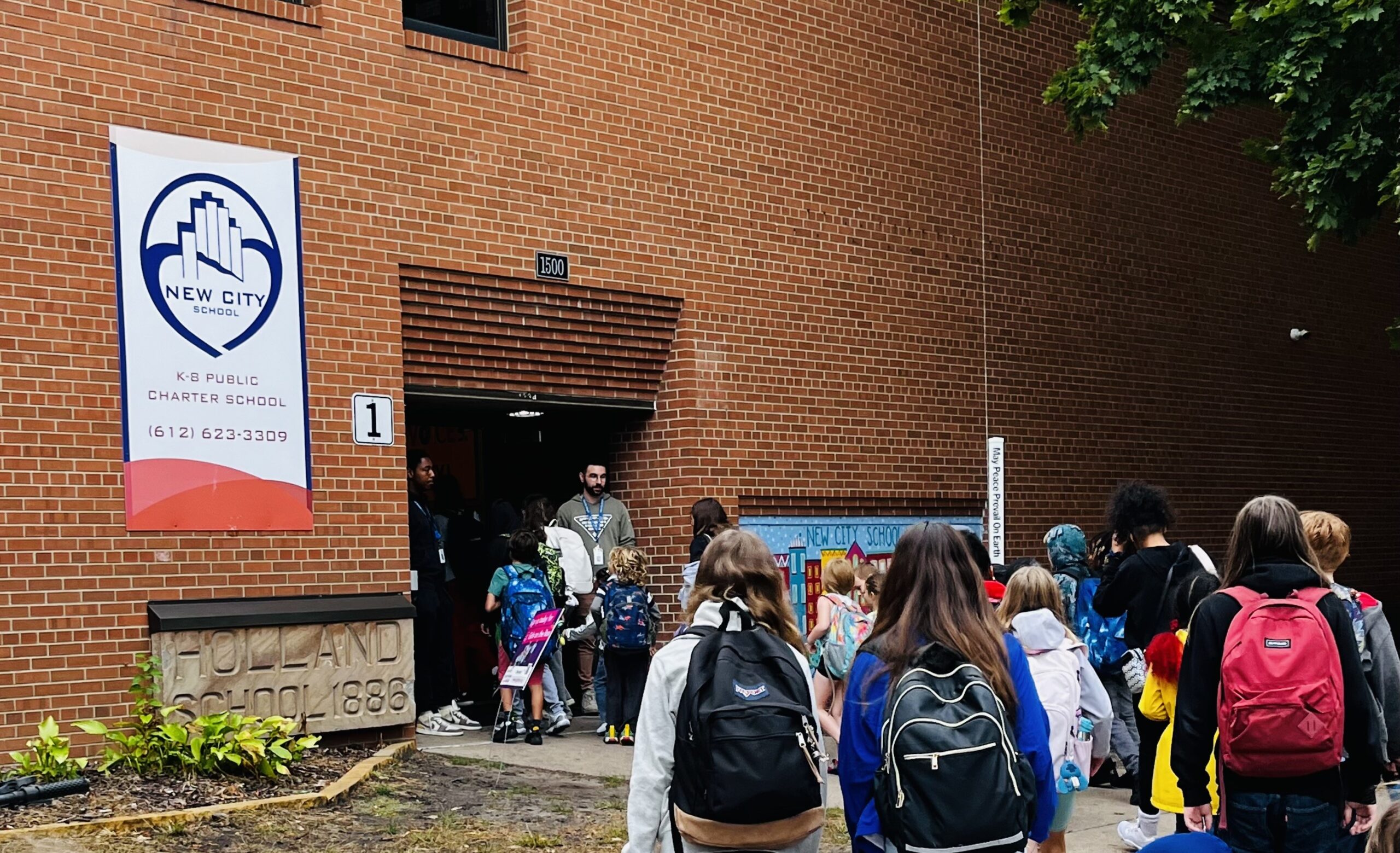New City School K-8: A Responsive Classroom School from the Start

Location: Minneapolis, MN
Type of school: Public charter school
Grade levels: K–8
Number of students: ~400
A Responsive Classroom school since: 2003
New City School has been a Responsive Classroom school since it opened its doors back in 2003. “It’s always been a part of who we are,” explains Kaylena Greenwell, co-director of teaching and learning at New City. (Her fellow co-director, Mary Spohr, has presented Responsive Classroom workshops for over a decade.) As co-directors, Greenwell and Spohr act as instructional coaches: they observe, provide feedback, and help educators reflect on their use of Responsive Classroom practices and strategies.
Here are some ways New City educators intentionally and proactively implement the Responsive Classroom approach with support from Greenwell and Spohr.
Intentionally Planning the First Weeks of School
New City’s use of the Responsive Classroom approach starts before the school year begins. Teachers convene for a workshop in which elementary educators spend time intentionally planning the first six weeks of school, while middle school educators focus on the first four weeks. They create schedules, plan how they will structure routines and procedures, and choose which of those routines and procedures they will introduce with Interactive Modeling.
Additionally, they spend time planning how they will set up their classroom space to best meet the needs of their students. Some considerations include: making sure to leave blank spaces on the walls to showcase student work, planning out where in the room students can take a break to calm down and practice self-regulation skills, and establishing a buddy teacher connection with a fellow educator.
New City educators emphasize the first few weeks of the school year because they see it as an opportunity to, as Greenwell puts it, “really foster student relationships and create safe spaces for students, which then becomes the foundation for the rest of the school year.” They have learned from past successes that building genuine and authentic relationships early in the school year through intentional planning leads to classrooms where students make remarkable social, emotional, and academic progress.
Reflection, Observation, and Feedback
The co-directors of teaching and learning support their fellow educators in cultivating these kinds of positive learning environments by creating an observation schedule in which teachers are constantly reflecting and receiving feedback on their use of Responsive Classroom practices. One resource Greenwell and Spohr have introduced to teachers to make the reflection process more intentional is The Responsive Classroom Assessment Tool for Teachers, which provides rubrics for over a dozen practices, including Interactive Modeling, Morning Meeting, and responding to misbehavior.
The co-directors also regularly observe teachers and provide constructive feedback. So, for example, they might catalog the different types of teacher language they hear to give the teacher being observed a sense of what type of teacher language they use the most and in what situations they most commonly use it. Or, they might assess whether a logical consequence like Space and Time is being used proactively to help the student be more mindful of their body or if the student views it as a punishment instead.
A non-exhaustive list of the Responsive Classroom practices Greenwell and Spohr spend time observing include:
- Daily Morning Meeting or Responsive Advisory Meeting (known at New City as Crew) to create predictability and promote a positive community
- Redirecting, reinforcing, and reminding language to be as clear as possible with students
- Strategies for responding to misbehavior—such as positive time-out and Space and Time— implemented with fidelity
- Energizers and brain breaks to get students to genuinely take a break and reset, as well as to build student-student and student-teacher relationships
Continued Growth
Along with the constant support Greenwell and Spohr offer New City educators and the self-reflection teachers regularly engage in, school leaders are committed to sending educators to Responsive Classroom trainings. Educators who are new to the approach are enrolled in either the Elementary Core Course or Middle School Core Course, depending on the grade level they teach, while teachers who already have a Responsive Classroom background can opt to take one of the advanced courses. Additionally, teachers who are transitioning into new roles can receive relevant training. For example, teachers moving into specialist roles—such as PE, art, or music—take the Support Staff Working Together one-day workshop.
New City’s combination of proactive planning, intentional implementation, and institutional support makes it an exemplary model of what the Responsive Classroom approach can look like when administered with fidelity.
